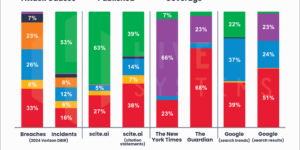Women’s representation in U.S. management ranks is slowly increasing, while the share of African-American managers has slipped since the last recession, according to a report released last week by the U.S. Equal Employment Opportunity Commission.
Women made up 38.6 percent of officials and managers in 2013, up from 37.5 percent in 2008, according to the report, which tracked employment trends among women and minorities since 1966. The EEOC looked at filings by some 70,000 U.S. companies that employ at least 100 people, businesses required to report gender and ethnicity with the government agency.
While women have made strong gains since the EEOC began collecting data in the 1960s, “barriers to entry may still exist,” the report said. The percentage of female managers fell short of the 53.2 percent of women among professionals, jobs including lawyer, accountant or architect that typically require an advanced university degree or similar certification.
The categories include a broad range of jobs, from CEOs to middle managers, said Jessica Milli, senior research associate at the Institute for Women’s Policy Research in Washington. “It’s great we have more women in management,” she said, “but there’s a lot of variation about where they are on that ladder.”
Plenty of research shows that “we are still seeing women hit that glass ceiling and have trouble getting past that middle,” she said.
Minorities Decline
While African-Americans make up 13 percent of the U.S. population and 14 percent of the work force, they held just 6.8 percent of management roles in 2013, down from 6.9 percent in 2008, the EEOC said. Hispanic representation also declined, to 7.4 percent from 7.5 percent.
The role of African-Americans in the professions fell to 7.6 percent from 7.8 percent.
Asian Americans, by contrast, gained in the management ranks between 2008 and 2013, the EEOC said, to about 5.5 percent from 4.6 percent. Among professionals, they make up 11.5 percent, up from 10.5 percent in 2008.
The EEOC said about 30 percent of the charges it handles each year regard sex discrimination. Race discrimination remained the most frequent ground for cases, the agency said, comprising 35 percent of the total.



















 Safeco to Stop Writing New Condo and Renter Policies in California
Safeco to Stop Writing New Condo and Renter Policies in California  National Flood Insurance Program Authorized to Continue Through Mid-March
National Flood Insurance Program Authorized to Continue Through Mid-March  Reporter’s Notebook: ‘Nobody Else Does Telematics,’ Lemonade Exec Says
Reporter’s Notebook: ‘Nobody Else Does Telematics,’ Lemonade Exec Says  Moderating Premium Rates, Falling Yields: European Insurers Resilient
Moderating Premium Rates, Falling Yields: European Insurers Resilient 




